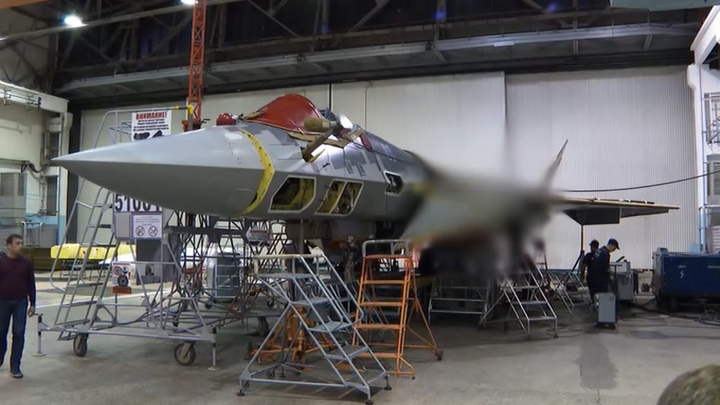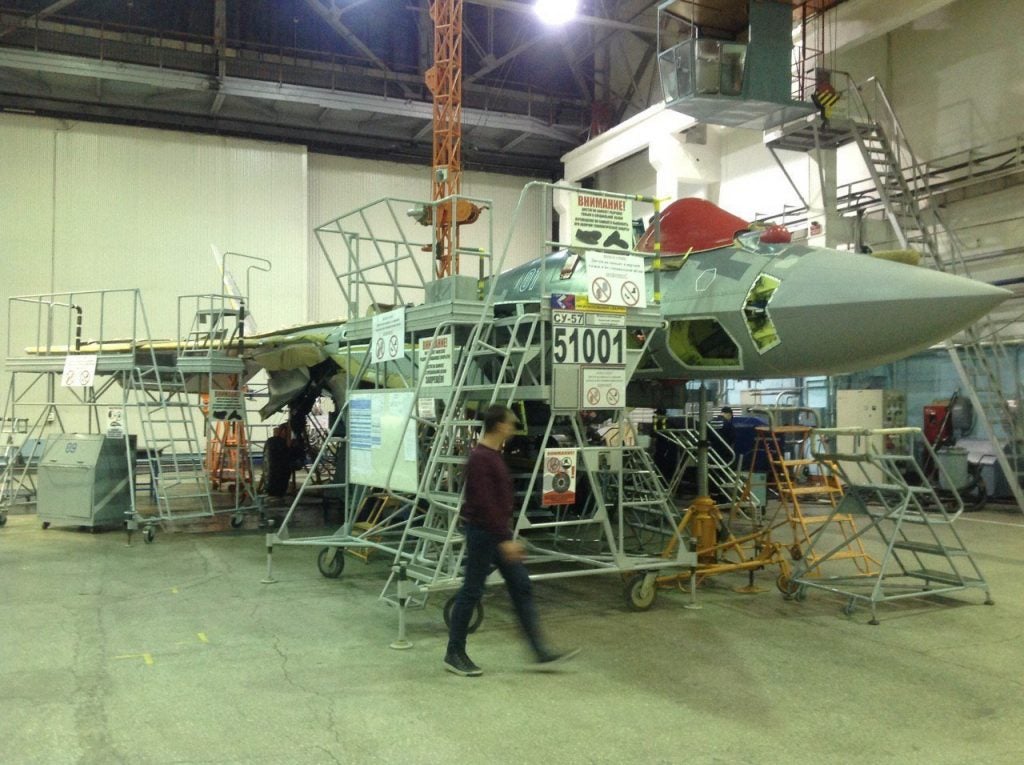First Production Su-57 Destroyed In Crash
Russian media sources have reported that a Sukhoi Su-57 (NATO reporting name Felon) crashed during an engine test flight near Komsomolsk-on-Amur. The crash took place on 24 December, with the crash site around 111 kilometers (68 miles) away from Dzyomogi Airport, the home airfield of the Komsomolsk-on-Amur Aircraft Plant (KnAAPO), manufacturer of the Su-57. The pilot was able to eject safely and was subsequently rescued by helicopter. There were no casualties or property damage on the ground.
TASS reports that the Su-57 abruptly entered a downward spiral at an altitude of 8,000 meters (~26,246 feet) following a failure of its control system.
TASS quoted their aviation industry source:
“The Su-57 was performing a test flight at the altitude of 8,000 meters. After the control system had failed, the fighter jet spontaneously entered a downward spiral and started descending and then crashing.”
The source added that the pilot then attempted to return to level flight unsuccessfully, and ultimately ejected at 2,000 meters, once it became clear that the aircraft was no longer recoverable.
TV Zvezda, a state-owned news network run by the Russian Ministry of Defence, reports that the Su-57 exploded upon impact with the ground, and the airframe was totally destroyed.

Vedomosti reports that the crashed Su-57 was bort number Blue 01. Blue 01 was supposed to be the first serial production Su-57 to be delivered to the Russian Air Force, and was undergoing its final series of factory tests when it crashed. Sukhoi and the Russian Ministry of Defence had signed a contract in 2018, for the delivery of two Su-57s by 2020. The two Su-57s are likely to be equipped with Saturn AL-41F Izdeliye 117 engines, as the “definitive” Izdeliye 30 engine remains under development.
A TASS source claims that the failure of the Su-57’s tail control system led to the crash. A special committee headed by the Russian Deputy Minister of Industry and Trade, Oleg Bokcharov, will be formed to establish the exact cause of the crash.
The destruction of Blue 01 is a major setback for the Su-57’s introduction into the Russian Air Force. Blue 01 was originally planned to be delivered to the Russian Air Force on 25 December, with an official delivery ceremony planned on the 27th. As the other Su-57 is currently earmarked for an extensive flight testing program, the Russian Air Force will only be able to take delivery of one Su-57 sometime in 2020.
As the Su-57 was yet to be delivered to the Russian Air Force at the time of the crash, the cost of the airframe will be completely borne by Sukhoi. The United Aircraft Corporation, Sukhoi’s parent company, stated to Interfax that the aircraft was insured, but neither the insurer nor the insured value was disclosed.
The Su-57 program has had a troubled gestation, with India withdrawing from the Fifth Generation Fighter Aircraft joint program citing unsatisfactory performance, cost overruns and significant delays. The Russian Air Force has ordered just 76 Su-57s to date, after previously refraining from orders due to the aircraft’s lack of maturity. Undaunted by tepid domestic reception, Russia and Sukhoi have engaged in an extensive public relations offensive, in the hopes of gaining export customers and perhaps development partners. It remains to be seen how the crash will impact these efforts.

